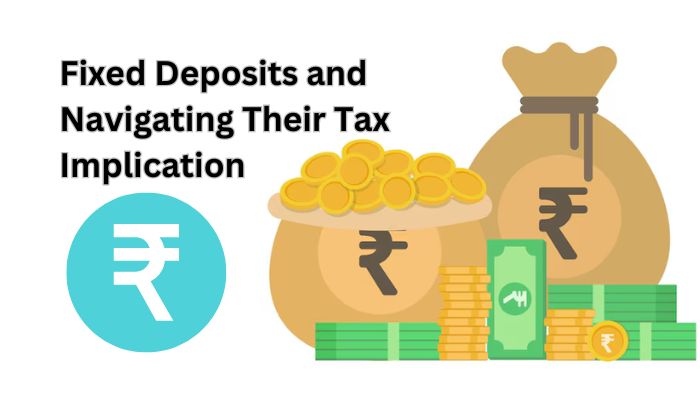Fixed Deposits (FDs) have always been a go-to investment option. They provide a safe and predictable way to grow savings. Fixed Deposit is a savings tool that is being offered by most issuers in India. Investors must deposit a lumpsum amount of money for a predetermined period. However, the interest rate differs from one issuer to another. Explore the issuers available and select one that can help you maximise your savings. While the appeal of FDs lies in their stability. The challenge for investors is to maximise returns and navigate the tax deductions.
The Quest for the Highest FD Rates in India
Securing the best FD rates is crucial for maximising returns. Here are some practical tips to find and leverage the highest FD rates in India:
Comparing Interest Rates
Different banks and NBFCs offer varying interest rates on FDs. It’s essential to regularly compare these rates. Shortlist an issuer that is suitable for your financial goals.
Considering Special Schemes
Banks roll out special FD schemes with higher interest rates for specific periods. Some schemes can offer a higher interest rate than regular FDs. Keeping an eye out for these offers can help you secure better returns.
Senior Citizens Advantage
A senior citizen can benefit from higher interest rates. This interest rate is for senior citizens is higher than standard rates. This added advantage can significantly boost your earnings over time.
Choosing the Right Tenor
Interest rates on FDs vary with the tenor. Generally, mid to long-term FDs may offer better interest rates. However, it’s essential to align the tenor with your financial goals.
Strategies for Maximising FD Returns
Here are some strategies one should consider to maximise their FD investments:
Laddering Your FDs
FD laddering involves splitting your investment into multiple FDs with different maturity dates. This ensures better liquidity but may allow you to reinvest at higher rates as each FD matures. For example, instead of investing ₹3,00,000 in a single 3-year FD, you could invest ₹1,00,000 each in 1-year, 2-year, and 3-year FDs. This way, you have funds maturing at different intervals. Doing so gives you the flexibility to reinvest at prevailing rates.
Reinvestment of Interest
Opt for cumulative FDs where the interest is compounded. The interest is paid on maturity rather than receiving it periodically. Compounding can significantly increase your returns over time.
Tax Planning
Consider spreading your FD investments across different tenors. This helps you manage your finances better and potentially reduce your tax liability. Also, explore tax-saving FDs to balance your overall tax liability. Tax-saving FDs under Section 80C come with a lock-in period of 5 years but offer tax deductions up to ₹1,50,000.
Tackling TDS Deductions on FD Interest
Tax Deducted at Source (TDS) on FD interest can eat into your returns if not managed properly. Here’s how you can handle TDS deductions on FD interest effectively:
Understand TDS Rules
Banks and NBFCs deduct TDS at 10% if your interest income from FDs exceeds ₹40,000 in a financial year. Similarly, they will deduct TDS at 10% if the interest income exceeds ₹50,000 for senior citizens. If you do not provide your PAN, the TDS rate is 20%.
Submit Form 15G/15H
Submit the following forms to your bank to claim a TDS deductions. This is applicable if your total income is under the taxable limit.
-
Form 15G (for individuals below 60 years)
-
Form 15H (for senior citizens)
Monitor Form 26AS
Regularly check your Form 26AS on the Income Tax Department’s e-filing portal. Verify the amount of TDS deducted being by your bank. This helps in ensuring accurate tax filings and claiming refunds if applicable.
Interest Distribution
If you have multiple FDs, consider spreading them across multiple banks. This keep the interest earned from each bank below the TDS threshold. This can help with minimising your TDS deductions.
Utilise Tax Exemptions
FD interest is taxable but by claiming deduction you can reduce your taxable income. Claim deductions under Section 80C and other sections of the Income Tax Act, 1961. Plan your investments to take full advantage of these exemptions. If TDS has been deducted despite your income being below the taxable limit. You can claim a refund by filing your income tax return. Provide all relevant documents and TDS certificates (Form 16A) to claim a refund.
Additional Tips for FD Investors
Auto-Renewal Option
Opt for auto-renewal of your FDs if you don’t need the funds immediately. This ensures your investment continues to earn interest without any break.
Diversification
Diversify across different issuers and tenors to mitigate risk.
Keep track of interest rate trends and be ready to reinvest at higher rates when your FDs mature.
Fixed Deposit is known for their safety and assured returns. Stay informed about the highest FD rates in India. Implementing effective strategies to maximise returns and tackle TDS deductions. Investors can significantly enhance the benefits of their FD investments. These insights can help you navigate the FD landscape with confidence.

